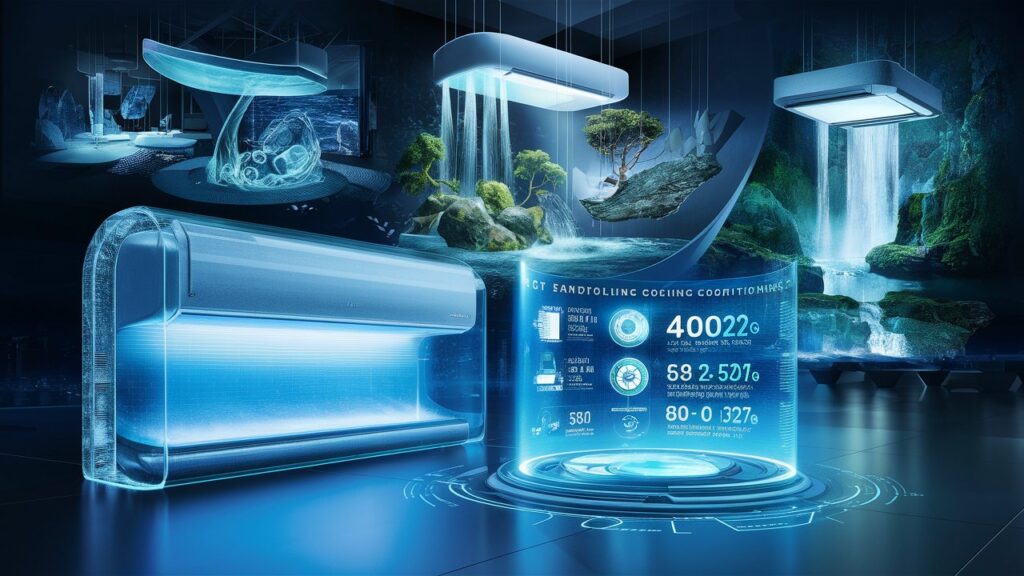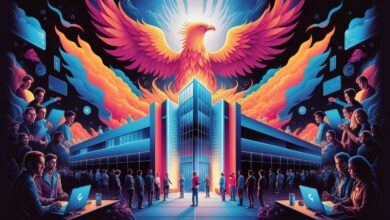
Introduction
The air conditioning industry is undergoing a seismic transformation, driven by climate change pressures, technological breakthroughs, and evolving consumer demands. Once a simple luxury, Breaking AC News systems now represent a critical nexus of energy efficiency, health, and environmental stewardship. As global temperatures soar and regulations tighten, manufacturers and innovators are racing to redefine what cooling technology can achieve. This article unpacks groundbreaking developments—from AI-driven climate control to sustainable refrigerants—and explores their implications for homeowners, businesses, and the planet. Prepare to dive deep into the forces reshaping how we stay cool.
Key Headings and Explanations
1. Smart AC Revolution: AI, IoT, and Predictive Climate Control
The integration of artificial intelligence (AI) and Internet of Things (IoT) sensors is turning traditional air conditioners into proactive guardians of comfort. Modern systems now analyze occupancy patterns, weather forecasts, and real-time humidity levels to auto-adjust cooling cycles. Brands like Daikin and Carrier deploy machine learning algorithms that “learn” user preferences, slashing energy waste by up to 30%. These units sync with apps like Google Home or Alexa, allowing geofenced activation—cooling homes minutes before residents arrive. The shift isn’t just convenient; it’s a critical step toward grid stability during peak demand, as utilities increasingly partner with tech firms to orchestrate load-balancing across thousands of connected devices.
2. Eco-Friendly Refrigerants: Phasing Out HFCs for a Greener Future
Hydrofluorocarbons (HFCs), long vilified for their extreme global warming potential (GWP), face global elimination under the Kigali Amendment. In response, chemists have pioneered next-gen refrigerants like R-32 and R-454B, which offer 75% lower GWP without compromising efficiency. Meanwhile, natural alternatives—ammonia (R-717) and carbon dioxide (R-744)—are gaining traction in commercial systems. This transition isn’t merely regulatory compliance; it’s a reengineering of thermodynamic principles to curb direct emissions. Manufacturers must now retrofit production lines while ensuring new gases remain safe and affordable—a high-stakes race where companies like Trane and Honeywell lead the charge.
3. Heat Pump Dominance: The Multi-Season Climate Solution
Heat pumps are eclipsing conventional AC units by offering year-round functionality—cooling in summer and heating in winter. Their secret lies in reversible refrigerant cycles, which extract ambient heat from outdoor air (even below freezing) and transfer it indoors. Governments from Canada to the EU are subsidizing installations to reduce fossil fuel dependence, with sales skyrocketing 40% year-over-year in colder regions. Advances in variable-speed compressors now enable operation at -22°F (-30°C), shattering “cold climate inefficiency” myths. This technology isn’t just an appliance upgrade; it’s central to decarbonizing buildings, which account for 40% of global carbon emissions.
4. Energy Efficiency Wars: SEER2 Ratings and Ultra-Low Power Designs
2023’s stringent SEER2 (Seasonal Energy Efficiency Ratio) standards have ignited an innovation arms race. Minimum efficiency jumped from 13 SEER to 14 SEER in the U.S., pushing brands to reimagine components. Variable-speed blowers, brushless DC motors, and microchannel condensers now dominate premium models, cutting consumption by 50% versus decade-old units. Solar-compatible ACs, like those from Lennox, integrate photovoltaic panels to offset up to 70% of daytime energy draw. These gains matter beyond utility bills: as cooling demand could triple globally by 2050, efficiency is the bulwark against overwhelming power grids.
5. Indoor Air Quality (IAQ) Integration: Beyond Temperature Control
Modern AC systems no longer just cool—they diagnose and purify. High-efficiency particulate air (HEPA) filters capture viruses, while UV-C lights neutralize mold in ducts. Humidity sensors maintain 40–60% RH levels to inhibit pathogens, and IoT monitors track CO2 levels, triggering ventilation when air grows stale. Companies like Mitsubishi Electric now embed electrostatic filters that trap sub-micron particles. This evolution responds to post-pandemic health consciousness and urban pollution crises, positioning ACs as frontline defenses for respiratory wellness.

Conclusion
The air conditioning industry’s transformation merges urgency with ingenuity. From AI’s predictive intelligence to refrigerant chemistry breakthroughs, these innovations address existential challenges: climate change, energy scarcity, and public health. Yet adoption hurdles remain—upfront costs, skilled installer shortages, and consumer awareness gaps. Policymakers and manufacturers must collaborate to scale solutions equitably, ensuring emerging economies aren’t left sweltering. One truth crystallizes: tomorrow’s Breaking AC News isn’t a luxury—it’s a smart, sustainable lifeline for a warming world.
Frequently Asked Questions (FAQs)
Q1: Why are HFC refrigerants being phased out?
HFCs have global warming potentials thousands of times higher than CO2. International treaties like the Kigali Amendment mandate their gradual replacement with low-GWP alternatives to curb climate change.
Q2: Can heat pumps really heat homes in freezing climates?
Absolutely. Modern cold-climate heat pumps use advanced vapor injection cycles and hyper-heat technology to operate efficiently at temperatures as low as -22°F (-30°C), outperforming traditional furnaces.
Q3: How do SEER2 ratings differ from older SEER standards?
SEER2 tests units under stricter real-world conditions (e.g., higher external static pressure). It’s a more accurate efficiency benchmark, resulting in slightly lower ratings than legacy SEER scores for the same unit.
Q4: Will smart ACs increase my cybersecurity risks?
While IoT-enabled devices can be vulnerable, reputable brands encrypt data and offer regular firmware updates. Always change default passwords and segment your home network to mitigate risks.
Q5: How often should I replace my AC filters for optimal IAQ?
Basic filters need monthly replacement, while HEPA filters last 6–12 months. Homes with pets or allergies benefit from quarterly changes. Smart ACs often alert users when airflow drops due to clogged filters.
Q6: Are solar-compatible AC systems worth the investment?
In sun-rich regions, yes. Pairing solar panels with high-efficiency AC slashes electricity bills by 50–70%. Federal tax credits (like the U.S. Inflation Reduction Act’s 30% rebate) further improve ROI.
Stay tuned to this channel for ongoing “Breaking AC News” coverage—where innovation meets impact.



